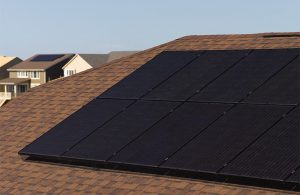Perovskite LEDs achieve unprecedented lifespan with new sieving technique

Perovskite LEDs achieve unprecedented lifespan with new sieving technique
by Riko Seibo
Tokyo, Japan (SPX) Feb 06, 2024
In a remarkable advancement in the field of optoelectronics, researchers have developed a novel solvent sieve method that significantly enhances the performance and operational stability of perovskite light-emitting diodes (PeLEDs), setting a new industry standard.
Perovskites, known for their exceptional optoelectronic properties and cost-effective production, have long been considered promising materials for display and lighting applications. However, the practical application of PeLEDs has been constrained by their low operational stability.
The research, centered on a comprehensive analysis of perovskite nanostructures, identified the presence of defective low n-phase perovskites as a primary factor undermining device stability. These defective phases, characterized by a minimal number of lead ion layers, arise from rapid and uncontrolled crystallization processes.
The solvent sieve method, inspired by the simplicity of sieving sand, employs a blend of polar and nonpolar solvents to selectively remove these unstable low n-phases. The polar solvents interact with the perovskites, functioning as a mesh, while the nonpolar solvents provide a supportive framework without affecting the perovskites.
This innovative approach has led to the development of PeLEDs with an operating lifetime exceeding 5.7 years at a luminance of 100 cd/m^2, marking a more than thirtyfold increase over untreated devices. Notably, this achievement represents the highest reported lifespan for green PeLEDs to date, surpassing the threshold for commercial applications. Additionally, these optimized devices have demonstrated a record-setting external quantum efficiency (EQE) of 29.5%, indicating a significant improvement in the conversion of electricity into light.
The resilience of these PeLEDs extends to their performance in ambient air conditions, with a maintained 75% of film photoluminescence quantum yield and 80% of its EQE for over 100 days at 50+/-10% humidity. This level of stability underlines the practicality and potential for the commercial deployment of PeLED technology.
Research Report:Phase dimensions resolving of efficient and stable perovskite light-emitting diodes at high brightness
Related Links
Ningbo Institute of Materials Technology and Engineering
All About Solar Energy at SolarDaily.com





